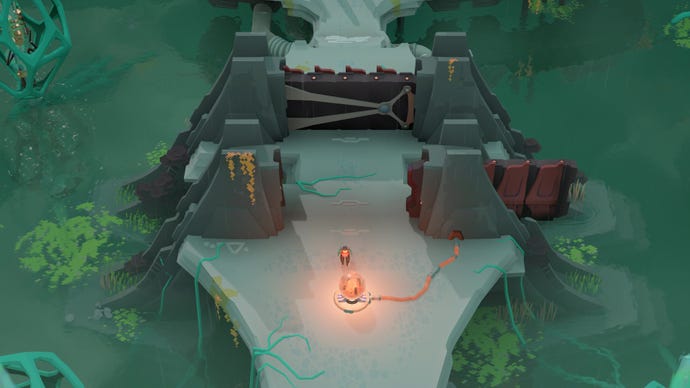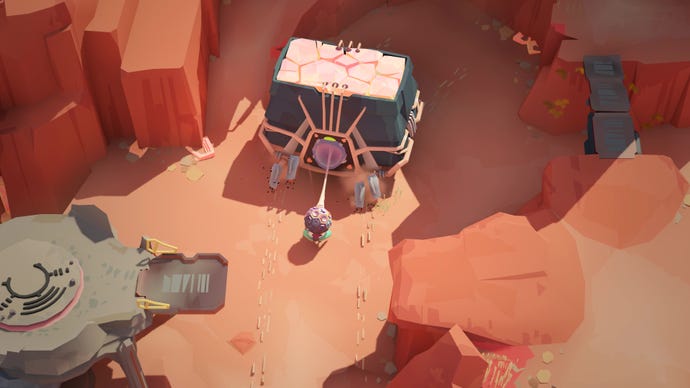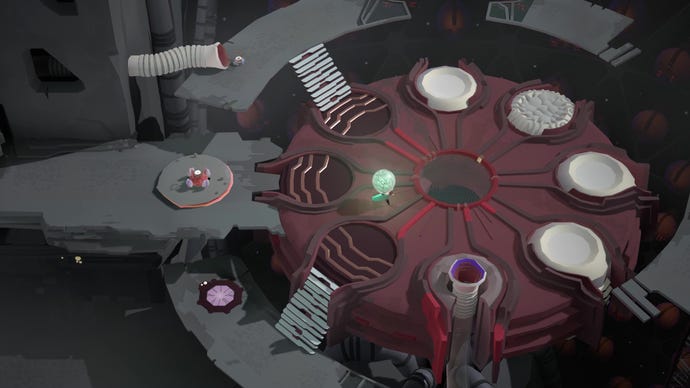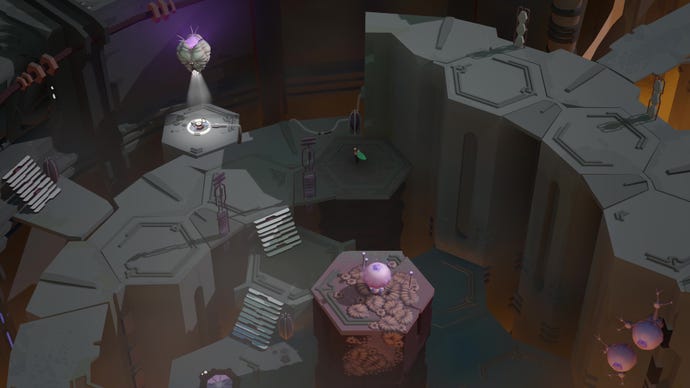HomeFeaturesCocoon
Cocoon’s greatest mysteries are hidden behind puzzles most players won’t findGame director Jeppe Carlsen and art director Erwin Kho on their puzzle game’s secret ending
Game director Jeppe Carlsen and art director Erwin Kho on their puzzle game’s secret ending
Image credit:Annapurna Interactive
Image credit:Annapurna Interactive

It’s been a good handful of years for fans of secret-ridden games. The sort of secrets that make the game world feel huge and unknowable and transform the post-game into a scavenger hunt more akin to ARGs than classic secret endings. After 2021’s meta deckbuilderInscryption, and enigmatic ZeldalikeTunica year later, 2023 brought usCocoon. Set in a cryptic world of insect-like aliens and their impossible machines, Cocoon is apuzzle gameall about mystery.
What best sells the mystery is a minority of puzzles that are so well-hidden, that a lot players might never know they exist. Those are the optional challenges that guard the way to Cocoon’s secret ending. Any given player might stumble on one or two clues for those puzzles, before shrugging and finding their way back to the main story. But as the game goes on and the clues remain unresolved, those players will wonder what other secrets are hidden around them. I talked to Jeppe Carlsen and Edwin Kho from developer Geometric Interactive, to learn why those puzzles were made, and how it feels to watch a community track them down in real time.
Cocoon’s world feels viscerally alien from the word go. Two tricks help achieve this. The first is Cocoon’s signature game loop where, like any classic adventure game protagonist, our little moth-like alien spends most of his time carrying items around to activate mechanisms - but, in this case, the little spheres used to interact with the environment are also contain new worlds that you can jump into.
To see this content please enable targeting cookies.Manage cookie settings
To see this content please enable targeting cookies.Manage cookie settings
Solving a puzzle in the main world might mean diving into multiple, nesting spheres, which often interact with one another in unexpected ways. If it sounds confusing, that’s because it is. It’s unlike anything from this Earth, which is why it feels so alien. But Geometric Interactive had another trick to add mystery to this story. It’s much more straightforward than the infinite reality loop, and based entirely around the game’s use of dialogue. Put simply, it doesn’t have any. It has no text at all.
So why abandon words if they make things so much simpler? As art director Kho explains, it’s more fun. “There’s a fun design challenge inherent to only using visuals to convey a backstory," he says. “We think that spelling things out literally would take away the opportunity for the player to imagine stories for themselves.”
Image credit:Rock Paper Shotgun/Annapurna Interactive


The game might have ended, but the mystery doesn’t, and the world becomes no less alien, leaving players without answers or explanations. It certainly creates a lot of suspense, though - enough to set many players on the path to the secret ending. A secret ending that reveals almost no new information, mind you, but that’s fine. The strength of this optional second playthrough is the journey, not the destination, and that goes for the players that don’t finish the secret ending, too. “Even though most players don’t solve any of these [optional] secrets, they still might stumble upon some of the hints, and get this nice feeling that something seems to be hidden in this game,” Carlsen explains.
Secret endings are going through some kind of golden age. Now, I realise that might sound like an exaggeration; games have always had hidden content, and it’s not like the practice ever went away. But the quest to find those secrets has never been as commonly convoluted as it is now.The Inscryption ARGlasted for months. Tunic featured two distinct and optional secret languages, one hidden entirely in its soundtrack. Even an alternate ending as tame asSignalis’s involved an obscure image-to-video encryption method called SSTV.
Image credit:Rock Paper Shotgun/Annapurna Interactive

But while the optional puzzles in Cocoon aren’t as elaborate as a full-blown ARG, as the devs note, calling them “simple” might be an understatement. As a matter of fact, the team might have underestimated how difficult those puzzles can get. The final ending was found about a week after release - not too long, but still longer than Carlsen exepcted. “Honestly, I thought the secret ending would be found even faster due to the consistent logic of the secret puzzles,” he says.
The developers knew that directing players without words would be difficult; Carlsen notes that having no dialogue “means that you as a designer never have an ‘easy way out’ - the level design needs to always teach you exactly what you need to learn to progress.” This self-imposed silence made Cocoon more interesting, but it made its toughest puzzles even less forgiving. Or at least that’s the case for solo players.
So the music puzzle might be impossible for one unlucky person, but not for a community. It only takes one player to spot the weird sound, maybe another to figure out the melody. In the meantime, everyone else can find where to input the solution or work on other puzzles. That’s the thing about communities and puzzles. The deeper you hide a secret, the harder it is to solve, but the more satisfying the solution becomes. Getting more people to look for the solution can help level those tough patches without making the solution less fulfilling.
Image credit:Rock Paper Shotgun/Annapurna Interactive

And I think a game like Cocoon all but needs the promise of another secret hiding just out of sight. Players need that promise to understand that somewhere, in this unknowably large world, in a place hidden even to the game’s own creators, there is an unfound clue that might make this cryptic world utterly knowable; that even if we don’t understand it, this world isn’t meaningless.